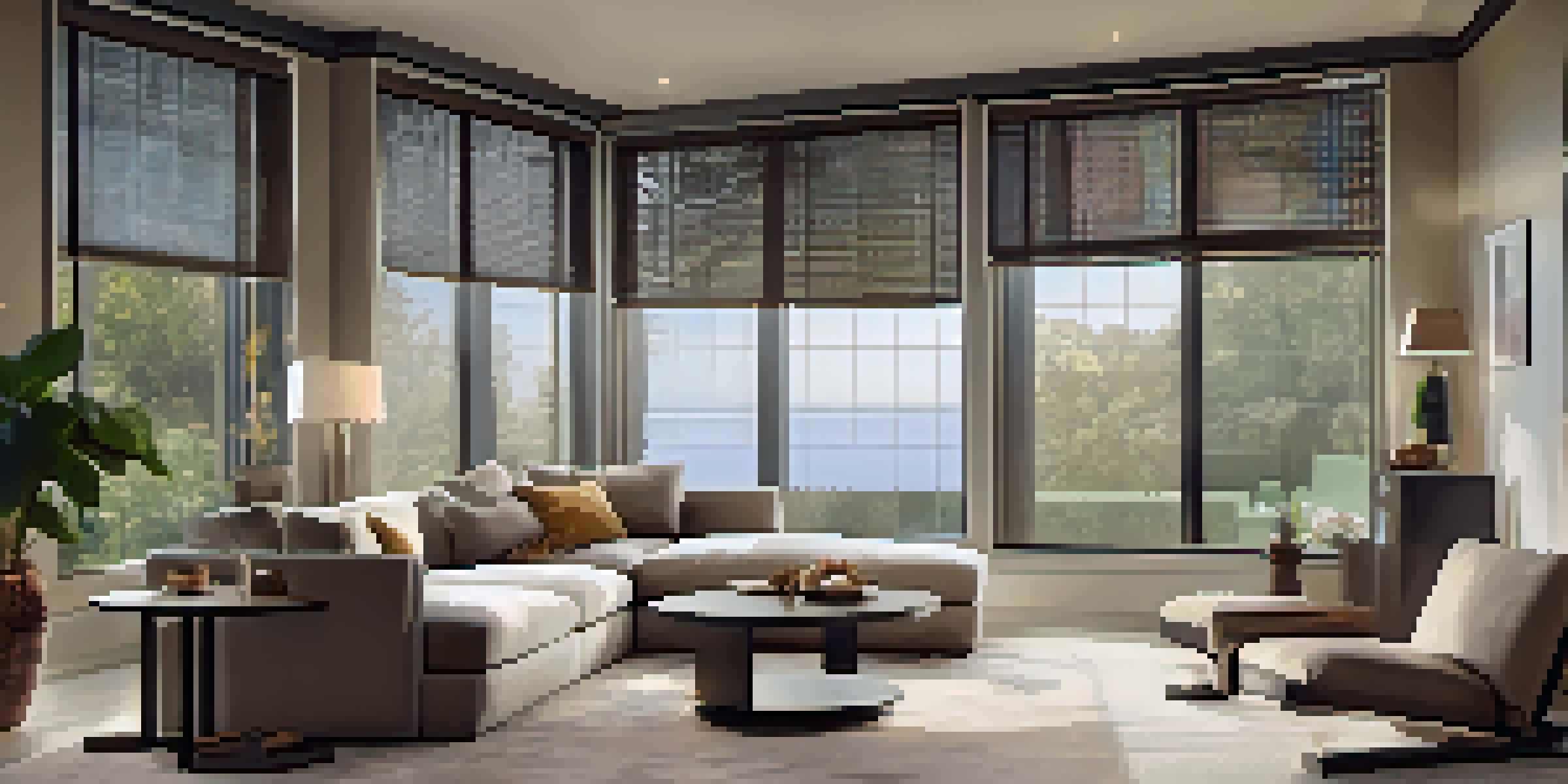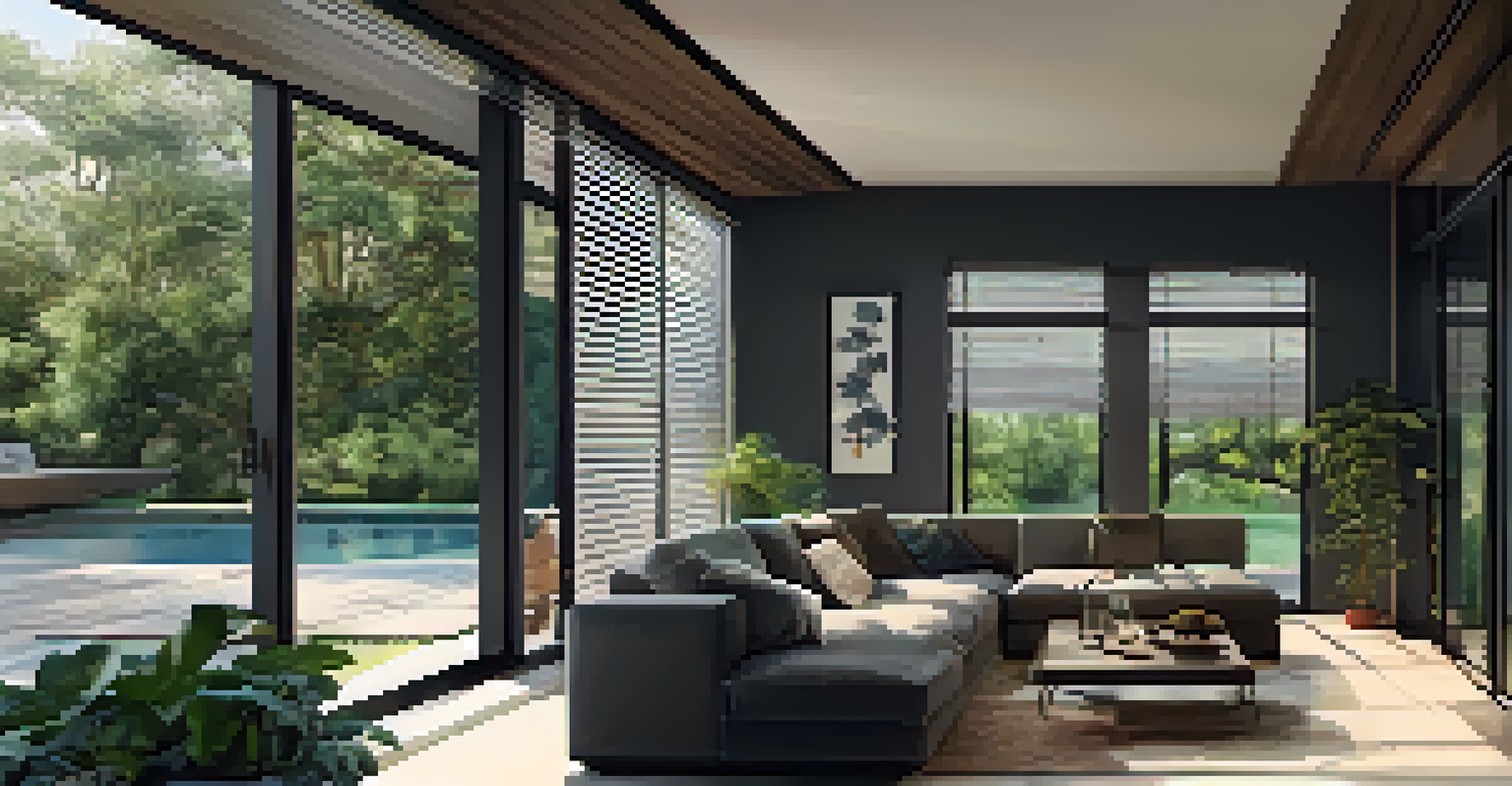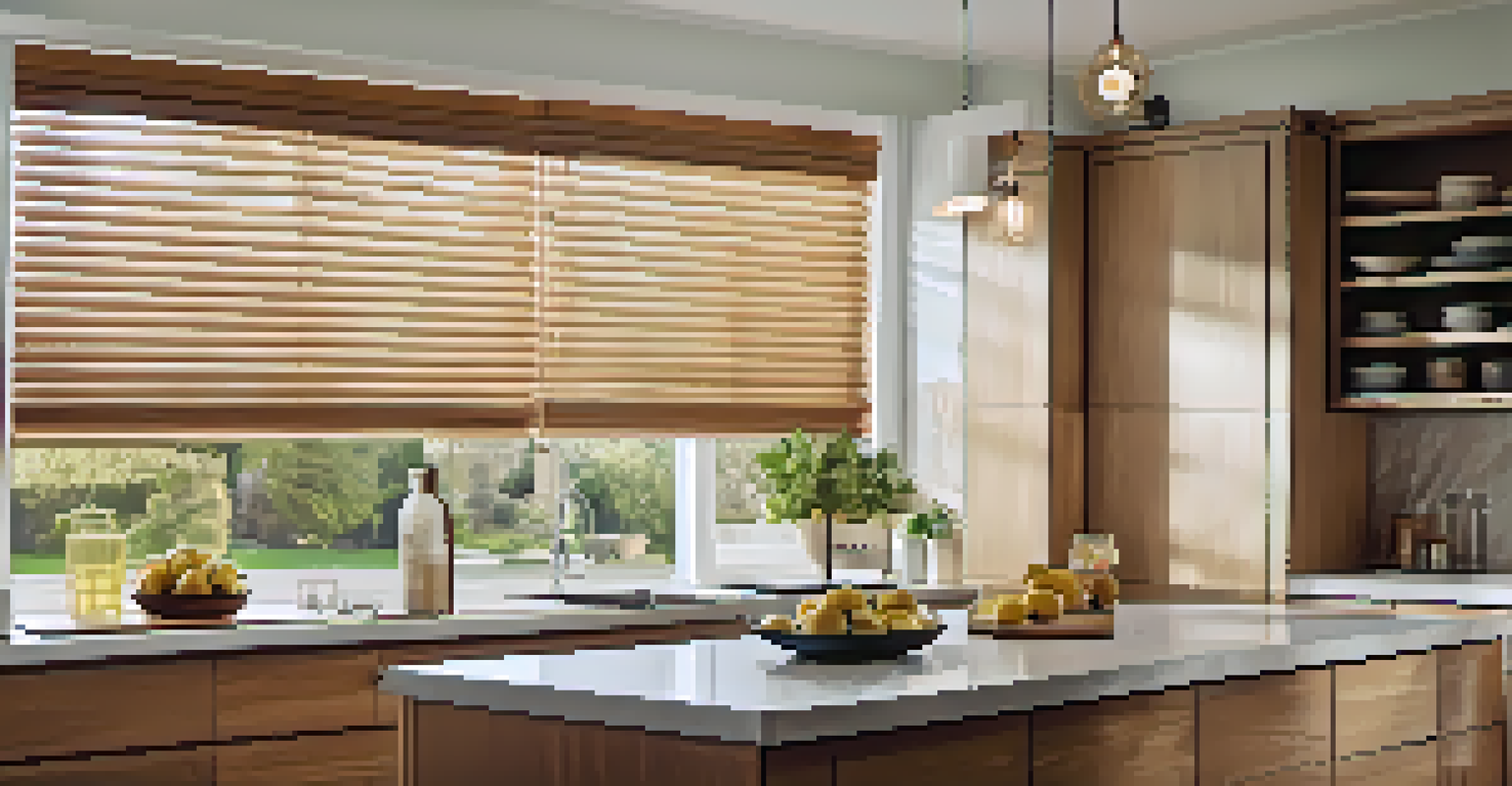Automated Blinds: Reduce Heating Costs with Smart Tech

Understanding Automated Blinds and Their Benefits
Automated blinds are window coverings that can be controlled remotely or programmed to open and close at specific times. They offer not just convenience, but also energy efficiency, making them a smart choice for modern homes. By adjusting the amount of sunlight entering your home, they play a crucial role in maintaining a comfortable indoor temperature.
The future is green energy, sustainability, renewable energy.
Imagine waking up to soft morning light as your blinds gradually lift or coming home to a cozy, well-lit space without lifting a finger. This automation not only enhances your daily routine but also contributes to significant energy savings. With the right settings, automated blinds can help regulate your home’s temperature, reducing reliance on heating systems.
Overall, these smart devices combine practicality with technology, thereby improving your living environment while also being kind to your wallet. The ability to program them based on your lifestyle means you can enjoy a home that's both comfortable and energy-efficient.
How Automated Blinds Help Reduce Heating Costs
Heating costs can significantly impact your monthly bills, especially during colder months. Automated blinds can help mitigate these expenses by allowing you to control heat retention and loss in your home. During the day, keeping blinds open lets sunlight in, naturally warming your space, while closing them at night traps that heat inside.

For example, in a sunny climate, you can program your blinds to close during the warmest hours of the day to prevent overheating. This simple adjustment can keep your home cooler, reducing the need for air conditioning. Conversely, in the winter, having your blinds open during the day can harness sunlight’s warmth, reducing your heating needs.
Automated Blinds Save Energy Costs
By efficiently managing sunlight and heat, automated blinds help reduce heating and cooling expenses in your home.
By strategically managing light and warmth, automated blinds empower homeowners to create an energy-efficient environment. The result? Lower heating costs and a more sustainable home.
Choosing the Right Automated Blinds for Your Space
When selecting automated blinds, consider factors like material, style, and functionality. Different materials offer various levels of insulation and light control, which directly affect energy efficiency. For instance, cellular shades are known for their excellent insulation properties, making them ideal for keeping heat in during winter.
The greatest threat to our planet is the belief that someone else will save it.
Also, think about the aesthetic aspect. You want blinds that complement your interior design while serving their practical purpose. Many manufacturers offer a range of colors and styles, allowing you to find an option that suits your taste without sacrificing performance.
Lastly, ensure that the blinds you choose are compatible with smart home systems, if you plan to integrate them. This compatibility allows for greater control over your home environment, further enhancing energy savings.
Integrating Automated Blinds with Smart Home Systems
Automated blinds work best when integrated with other smart home devices. For instance, connecting them to a smart thermostat can create a seamless energy management system. When the thermostat detects a drop in temperature, it can automatically close the blinds to preserve heat, ensuring your home remains cozy without additional energy use.
Moreover, you can set schedules or use sensors that detect sunlight and adjust the blinds accordingly. This means that on sunny days, your blinds can close to keep your home cool, while on overcast days, they can open to let in as much light as possible. It’s all about optimizing your home’s energy efficiency without extra effort.
Smart Home Integration Enhances Functionality
Integrating automated blinds with smart home systems allows for optimized energy management and effortless control.
Integration with voice assistants also adds a layer of convenience. Imagine simply saying, 'Close the blinds,' and having them respond instantly, making your home not only smarter but also more comfortable.
The Environmental Impact of Using Automated Blinds
Using automated blinds isn't just good for your wallet; it’s also beneficial for the environment. By reducing your reliance on heating and cooling systems, you significantly lower your energy consumption, which in turn decreases your carbon footprint. This makes automated blinds a responsible choice for eco-conscious homeowners.
Additionally, many automated blinds are made from sustainable materials, contributing to a more environmentally friendly home. Choosing energy-efficient products helps promote a market for sustainable goods, encouraging more manufacturers to adopt eco-friendly practices.
In the grand scheme of things, small changes in how we manage our homes can lead to significant environmental improvements. By incorporating automated blinds, you’re making a positive impact on both your living space and the planet.
User Experiences: Real-Life Benefits of Automated Blinds
Many users report significant savings on their heating bills after installing automated blinds. For instance, one homeowner shared that they saved nearly 30% on their energy bills during the winter months after implementing this technology. The convenience of programming blinds to operate on a schedule made it easier to maintain an efficient heating routine.
Another user highlighted the comfort aspect, mentioning how automated blinds helped them regulate room temperatures effortlessly. They could enjoy natural light without the discomfort of direct sunlight or excessive heat. This balance not only made their home more pleasant but also lessened the strain on their heating system.
Eco-Friendly Choice for Homeowners
Automated blinds lower energy consumption and carbon footprints, making them a sustainable option for eco-conscious homeowners.
These real-life experiences illustrate the tangible benefits of switching to automated blinds. The blend of comfort, convenience, and savings resonates with many homeowners seeking to enhance their living spaces.
Getting Started with Automated Blinds in Your Home
If you're considering automated blinds, the first step is to assess your windows and identify the areas that would benefit most from this technology. Think about which rooms get the most sunlight or where you struggle with temperature control. This focus will help you make informed decisions when selecting the right blinds.
Next, research different brands and models, keeping in mind factors like insulation, style, and smart home compatibility. Reading reviews and seeking recommendations can guide you in choosing a reliable product that offers both functionality and aesthetic appeal.

Finally, consult with a professional installer if you're unsure about the installation process. While some blinds are DIY-friendly, having an expert set them up can ensure optimal performance and longevity, allowing you to fully enjoy the benefits of automated blinds.